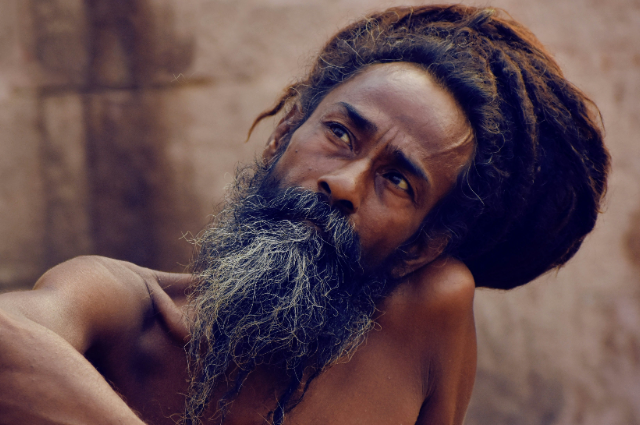
Photo by Manish Tak on Unsplash
The Battle of Gokul
Dating back to the 8th century, Adi Shankaracharya was a witness to the persistent attacks that befell the Hindus; Adi Shankaracharya then introduced the need for a military provision for Naga Sadhus to also take part in the protection of their region and religion. Ahmed Shah Abdali, the emperor of Afghanistan was about to invade India for the fourth time, there were no other authoritarian powers other than the Mughals to put up a fight in the northern regions, and they (the Mughal King) caved to an agreement with the invaders in which they got permission to loot Delhi. But Ahmed Shah Abdali didn’t just stop at looting Delhi in January 1757; he proceeded to decimate sacred temples as well. Unsatisfied with his pursuit, he asked his two commanders to take 20,000 soldiers with them, to raid Mathura, Vrindavan, Agra and Ballabgarh. They obliterated the soul of Mathura, with dead bodies painting the landscape with flesh and blood. After leaping to Vrindavan and replicating the horrendous plight that had taken place in Mathura, they were headed for Agra, when Sardar Khan, one of the commanders, suggested the invasion and looting of Gokul instead, as it more within their reach.
He marched into Gokul with 10,000 Afghan soldiers, where they were halted by 4,000 Naga Sadhus, ready to be at war with them. They gathered there from sacred cities such as Haridwar and Ujjain, to put an end to the violent acts of the Afghan invaders on the Hindus. After additional efforts by the Afghan soldiers to bring in more troops to withstand the attack of the Naga Sadhus, they retreated after Sardar Khan gave the order to do so. It resulted in more than 5,000 deaths of the Afghan soldiers with many more injured. 2,000 Naga Sadhus were killed and were seen as martyrs for their valor. There was a gradual change in the socio-political structure and culture in the northern regions of India as it transitioned into the colonial rule, especially a change in “Indian monasticism”. Before the 1800s, the Shaiva and Vaishnava monks had political and economic influence by holding occupations such as bankers, merchants and soldiers.
Mercenaries of the Changing Economic and Political Order
Naga bands of Shaiva and Vaishnava Sadhus were employed into different services under the Maharajas of Udaipur, Jaipur, Jodhpur, Baroda, and other kingdoms, and were also made to be a part of a “regularly paid standing army.” The increase in the demand for the military skills of warrior ascetics was met with the political involvement of the Naga Sadhus.
Sir Jadunath Sarkar, a noted historian, recorded these Naga bands of Shaiva and Vaishnava Sadhus who had fought in many battles for Rajas of different regions, in his book ‘A History of Dasnami Naga Sanyasis’.
There were multiple records of the three famous Dasanami Nagas in the 18th century, which include, Rajendra Giri Gosain and the brothers Anup Giri Gosain and Umrao Giri Gosain, who were both Rajendra Giri’s chelas. “The Naga force of Anup Giri and Umrao Giri was part of a combined army, which also included Mughals, Pathans, Ruhelas, Rajputs and others, who together fought the British in battles at Patna and Buxar in 1764.”
Other armed sanyasis, through their own bands, or bands formed with Muslim fakirs and “the impoverished peasantry of Bengal” came head to head with the East India Company after it acquired Diwani rights to collect revenue throughout Bengal in 1765. The raids carried out by these bands have been described as a “precocious guerrilla war for India’s independence” to a “haphazard outbreak of banditry.”
“The British version of events, wherein the ash-clad, bhang-drinking sanyasis and fakirs are presented as marauder bandits, has been challenged by many historians, who assert that the disturbances of the period was part of a larger movement of peasant unrest and rebellion against colonial repression and excessive taxation, which sometimes caused starvation, and that the sanyasis and fakirs frequently spearheaded these movements.”
The East India Company made efforts under the order of Warren Hastings to deny sanyasis and fakirs entry into Bengal. A law was passed in 1773 to restrain the sanyasis and fakirs from acquiring arms and weaponry as well as denying them entry into Bengal. By the 1800s, it was supressed and the beginning of the 19th century saw the decline of bands of armed ascetics and their political activities.
As the akharas of these declining warrior ascetics slowly collapsed, its attributes waned as it only left behind the ceremonial rituals. These changes in the political and economic atmosphere of these northern regions led to adaptation, and occupations of “urban-property ownership and money lending.” Large-scale acquisition of property fed into a certain alienation of the Nagas that were faced with changes in their choice of life, and where to reach in its attainment.
“Armed battles were replaced by the urgent need to manage akhara properties and to keep alive the symbols of their mercenary past to be showcased during Kumbh Melas.”
